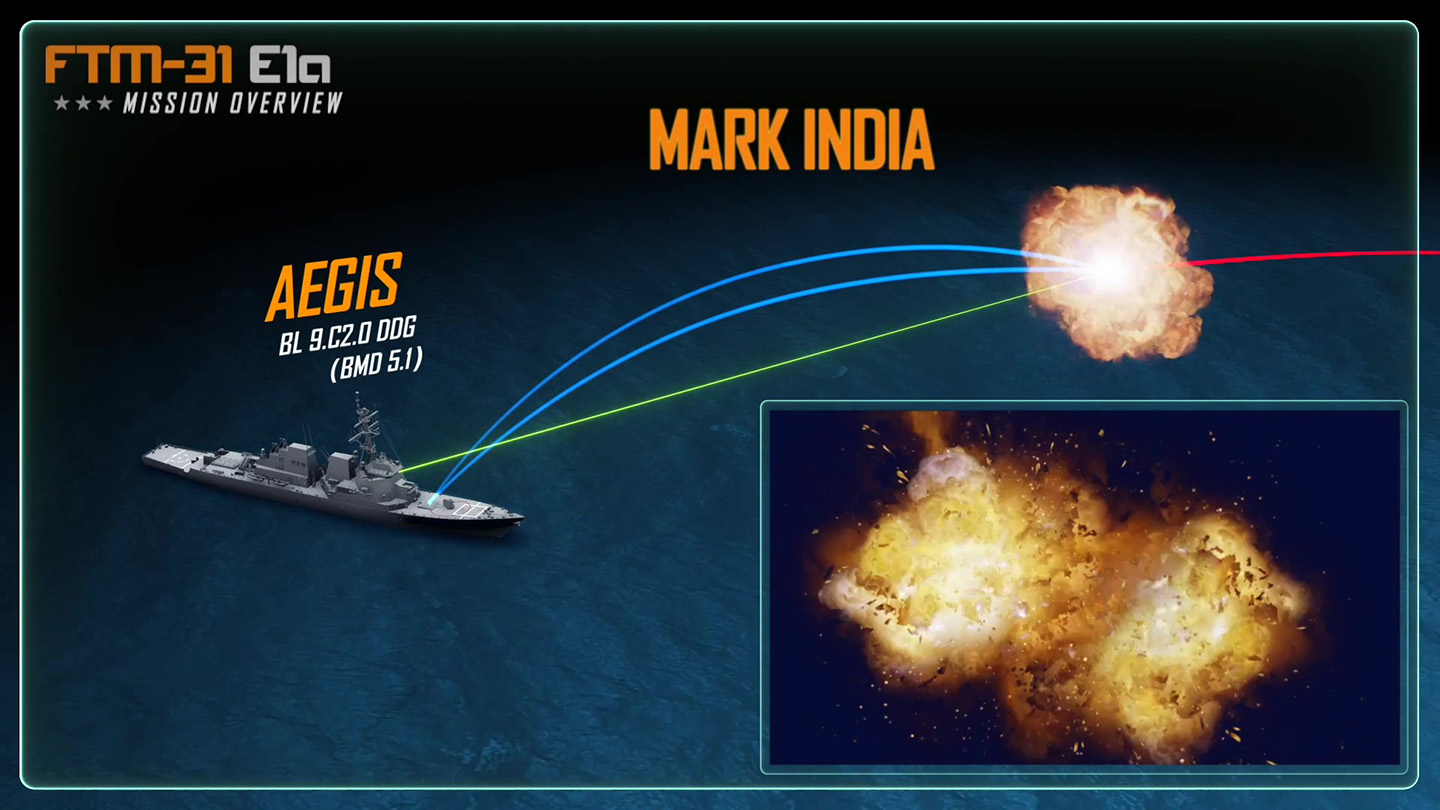News
Johns Hopkins APL Provides Critical Contributions to Successful Ballistic Missile Intercept Test
The Johns Hopkins Applied Physics Laboratory (APL) in Laurel, Maryland — in cooperation with the U.S. Missile Defense Agency (MDA) and the U.S. Navy — recently supported the successful Flight Test Aegis Weapon System 31 Event 1a.
The test demonstrated the capability of a ballistic missile defense (BMD)-configured Aegis ship to detect, track, engage and intercept a medium-range ballistic missile (MRBM) target in the terminal phase of flight utilizing the Standard Missile-6 (SM-6) Dual II with software upgrade (SWUP) in a single salvo of two interceptors.
Designated FTM-31 E1a, the event was the third successful flight test of an Aegis BMD-equipped vessel using the SM-6 Dual II missile and the first Aegis Baseline 9.C2.0 (BMD 5.1) intercept of an MRBM target using the SM-6 Dual II SWUP missile.
FTM-31 E1a highlights adjustments made after FTM-31 E1, conducted in May 2021, which only met some of its objectives. The successful execution of this mission validates that the upgraded SM-6 Dual II SWUP capability is now ready for use by the warfighter to defend and protect our allies and deployed forces worldwide.
“This was an incredible accomplishment and key milestone for the Sea-based defense program,” said MDA Director Vice Adm. Jon Hill. “This test proved our capabilities in an operationally realistic scenario, which is a critical step in increasing our capability to outpace emerging threats. My congratulations to the entire test team, including our sailors and our industry partners, who helped us to achieve this milestone.”
The target was launched from the Pacific Missile Range Facility, located on Kauai, Hawaii. The firing ship used for this test was the USS Daniel Inouye, which launched two SM-6 Dual II missiles and successfully intercepted the MRBM.
“The APL team was instrumental in the FTM-31 E1a scenario test definition, modeling of the test target parameters, high-fidelity weapon system model development, preflight weapon system performance assessment, flight test execution and postflight assessment of the test objectives,” said Dave Van Wie, head of APL’s Air and Missile Defense Sector. “As the technical direction agent for Aegis Ballistic Missile Defense system, APL is integral in the full systems engineering life cycle, including testing and transition of BMD capability to the U.S. and allied fleet forces.”
SM-6 delivers over-the-horizon air defense capability and can perform anti-air warfare, ballistic missile defense and anti-surface warfare missions. The SM-6 Dual II SWUP missile is designed to defend against short-to-medium-range ballistic missiles in the terminal phase of flight.
The Sea-Based Terminal (SBT) program, with the Aegis Baseline 9 Weapon System and SM-6 missile, is instrumental in MDA’s efforts to deliver a capability to the Navy to defend high-value assets at sea and ashore against advanced threats in the terminal phase of flight. SBT is an incremental and evolving ballistic and regional hypersonic defense capability.

